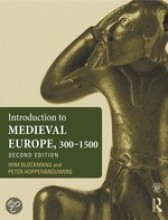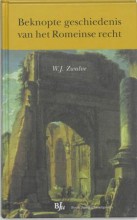Samenvatting: An Introduction To Medieval Europe, 300-1500 | 9780415675871 | Wim Blockmans, et al
- Deze + 400k samenvattingen
- Een unieke studie- en oefentool
- Nooit meer iets twee keer studeren
- Haal de cijfers waar je op hoopt
- 100% zeker alles onthouden
Lees hier de samenvatting en de meest belangrijke oefenvragen van An Introduction to Medieval Europe, 300-1500 | 9780415675871 | Wim Blockmans; Peter Hoppenbrouwers; Willem Pieter Blockmans
-
0 Introduction
Dit is een preview. Er zijn 1 andere flashcards beschikbaar voor hoofdstuk 0
Laat hier meer flashcards zien -
Wie heeft de term Middeleeuwen verzonnen?
Francesco Petrarca, een humanist, die duidde op de duistere periode hiervoor, tussen 2 grote tijdsvakken. De oudheid en de nog te beginnen renaissance. -
Welke twee hedendaagse invalshoeken kent men wat betreft de Middeleeuwen?
- het aan het licht brengen van het speciale, individuele karakter van de Middeleeuwen- licht werpen op de bouwstenen die in de Middeleeuwen zijn gelegd voor onze huidige maatschappijen -
Wat valt er te zeggen over de diversiteit van culturen in de ME?
Door Europa's geografische diversiteit en slechte transport middelen bestonden er grote verschillen op het gebied van regionale cultuur en economie. -
Waarom gebruiken we de term Middeleeuwen in Europa en welk Europa bedoelen we?
De term ME wordt enkel in Europa gebruikt en niet op andere gebieden toegepast omdat het enkel Europese historische context kent. Met Europa bedoelen we gedeeltelijk het Europa van nu, maar vooral het MZ-gebied en wat hier uit voortkwam, samen met de Vikingen. -
Op welke manieren verschilde Europa op het gebied van andere machtige rijken?
- sterke expansie wil- een technologische voorsprong op het gebied van vuurwapens, scheepsbouw en navigatie- geen 1 autoritaire structuur: wanneer een vorst afzag van een expeditie stond een ander land al weer klaar om te gaan verkennen- geen enkele autoriteit hield stand. dit was een stimulus voor innovatie- steeds groter wordende scheiding tussen kerk en staat. en opkomst van stedelijke macht- deze combinatie zorgde voor de geboorte van het commerciële kapitalisme -
Wat is medievalisme? Wanneer kwam dit op?
Alle referenties naar de Middeleeuwen in moderne en populaire cultuur.In het begin van de 19e eeuw vond er een ideologische hang naar de ME plaats. Op het gebied van architectuur werden veel gebouwen in Gothische stijl gebouwd of juist in Neo-Gothische stijl, hier ontstond veel discussie over. -
1 The end of the Roman Empire in the West
Dit is een preview. Er zijn 55 andere flashcards beschikbaar voor hoofdstuk 1
Laat hier meer flashcards zien -
Wat en wanneer stelde Diocletianus in?
In 293 stelt hij de tetrarchie in, het rijk wordt in 2 delen verdeeld, waarover een Augustus en Caesar heersen, de eerste is hierbij het belangrijkst. -
Wat waren de hervormingsdoelen van Diocletianus en hoe probeerde hij deze te bereiken?
- orde en uniforme wetgeving: laten coderen van de wet
- belastinginkomen veiligstellen: belasting reorganiseren
- economische stabiliteit: vastleggen van prijzen en geld revalueren
- loyaliteit aan de staat via religie: uniforme religie
- het verdelen van het land in civitates: stad met bijbehorend land gebied
-
Wanneer eindigde de tetrarchie en wat kwam hierna?
De tetrarchie eindigde in 324. Constantijn vermoorde zijn rivalen en werd alleenheerser/monarch.In 365 kwam Valentinianus aan de macht, en hij stelde de dyarchie in, hierbij was het rijk verdeeld onder 2 keizers. -
Wat voor persoon was de keizer binnen de Romeinse samenleving?
- hij werd gezien als bijna heilig, en zo omringd met ceremoniele gebaren
- hij was primus inter pares, heerser onder gelijken
- hij moest zo ook deel zijn van het volk, wat zij niet fijn vonde
- Hogere cijfers + sneller leren
- Niets twee keer studeren
- 100% zeker alles onthouden
Onderwerpen gerelateerd aan Samenvatting: An Introduction To Medieval Europe, 300-1500
-
The end of the Roman Empire in the West
-
The establishment of two world religions: Christianity and Islam
-
The powerful and the poor: society and economy in the Frankish kingdoms and beyond
-
Accelerated growth
-
Early kingdoms and principalities
-
Religious reform and renewal
-
The beginnings of European expansions - The West become more aggressive
-
The beginnings of European expansions - Shifting centres of gravity
-
The beginnings of European expansions - Take-off to a commercial revolution
-
Thinking about man and the world - The formation of universities
-
Thinking about man and the world - The humanism of the late Middle Ages - Studia humanitatis and the new humanism in Italy
-
Towns and the urbanisation of medieval society - The phenomenon of the pre-industrial town - The scale of towns and of urbanisation
-
Towns and the urbanisation of medieval society - The beginnings of urban society
-
Towns and the urbanisation of medieval society - Autonomy and liberty
-
Towns and the urbanisation of medieval society - Points to remember - Craft guilds and guild regimes
-
Between crisis and contraction: population, economy and society - War, famine and pestilence
-
Between crisis and contraction: population, economy and society - Theories on demographic decline and economic development
-
Between crisis and contraction: population, economy and society - Characteristics of late medieval society - Openness and closure
-
Between crisis and contraction: population, economy and society - Characteristics of late medieval society - The position of women
-
Between crisis and contraction: population, economy and society - Social contrasts and social conflicts
-
The consolidation of states - Types of state: sovereignty versus suzerainty
-
The consolidation of states - The course of events - State-making and nation-building through warfare: English and French kingship united?
-
The consolidation of states - The Holy Roman Empire and Italy: stalemate
-
The consolidation of states - Driving forces in the formation of states - War
-
The consolidation of states - State institutions and social order
-
Crisis in the Church and the reorientation of the faithful - Who leads Christendom - Spiritual and secular power
-
Crisis in the Church and the reorientation of the faithful - The popes of Avignon and the bureaucratisation of the Curia
-
Crisis in the Church and the reorientation of the faithful - The Great Schism and the conciliar movement
-
Crisis in the Church and the reorientation of the faithful - Religious life































